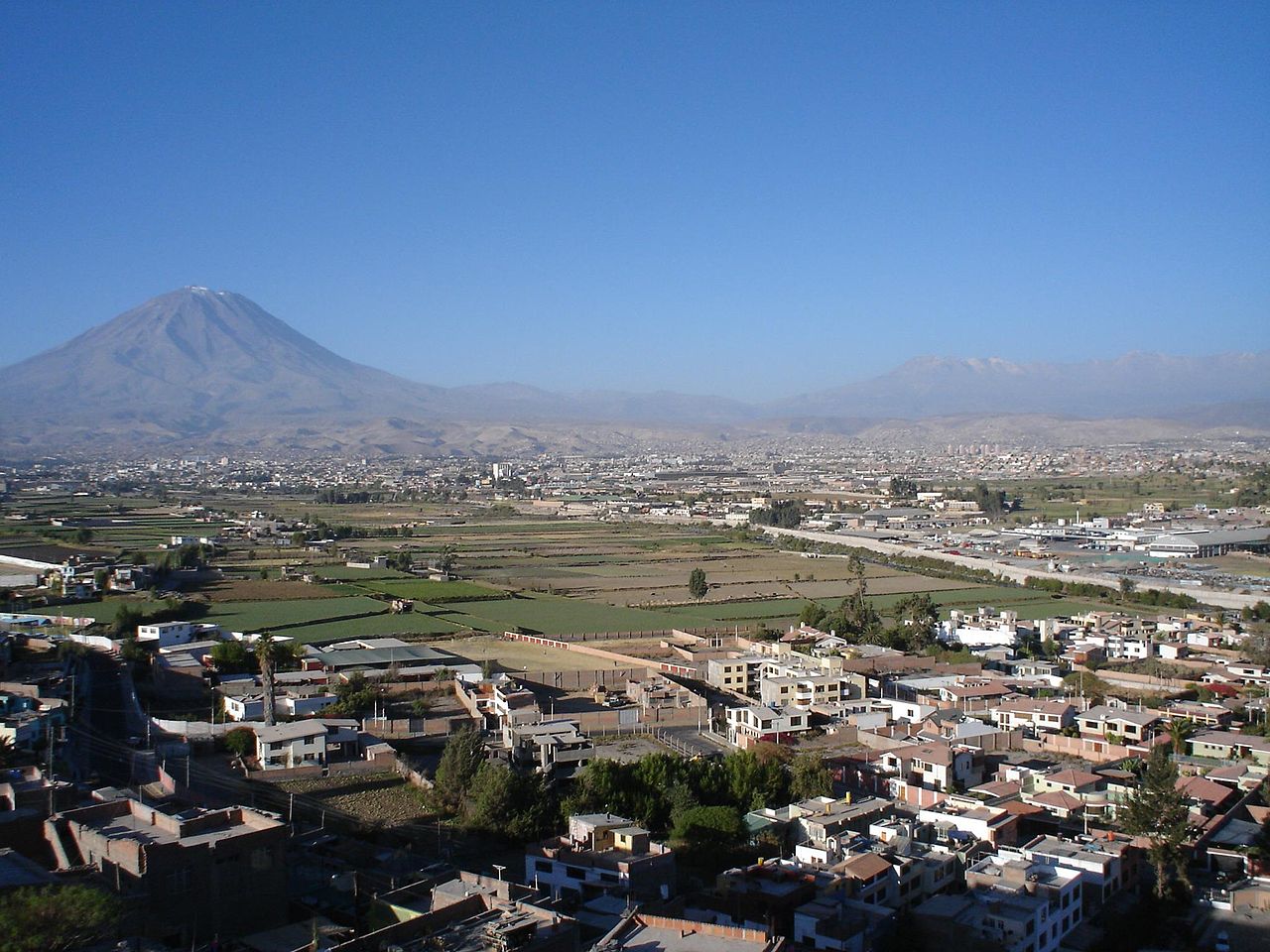
The cities of southern Peru encompass the most beautiful of the South American country, except for the capital, Lima. Crossed by the Andes mountainsLike the rest of the country, the south is made up of the departments of Tacna, Moquegua, Puno y Arequipa.
It is the area where the Tiahuanaco and Nazca cultures. The first dates back to the XNUMXth century BC and spread through the current Chile, Bolivia y Peru, while the second was more modern since it developed between the XNUMXst and XNUMXth centuries after Christ. But it is also more famous, mostly because of its mysterious geoglyphs. In any case, the cities that you can visit in southern Peru combine the influence of that past with the colonial one and have a lot to do with it. If you want to know them, we invite you to continue reading.
Cities of southern Peru: history and natural wonders
A tour of the cities of southern Peru has to cover the white Arequipa, land of condors; Puno, where you should be careful with the mountain sickness or altitude sickness; the quiet Moquegua, with its churches and houses with mojinete roofs; Tacna, which holds the title of "Heroic" for his participation in the independence of the country; Ilo, with its beautiful beaches, and the border Drain. We are going to know all of them.
Arequipa, the White City
Arequipa receives that name because most of its constructions are made of ashlar, a white material. But, anecdotes aside, what you want to know about her is that she has one of the most spectacular architectural heritages in all of South America.
Its historic center is Heritage for the huge amount of monuments it contains. Almost all respond to a colonial style with native influences that was synthesized in the so-called Arequipeña School.
The nerve center of the old town is the Plaza de Armas, where you can see the spectacular cathedral, Neo-Renaissance style and built in the seventeenth century. Acquaintances respond in the same way Portals, which in their time housed the Cabildo, and the churches of the Company and of Our Lady of Mercy. Not forgetting its bronze basin in the center that represents the popular tuturutu, who, according to legend, was a cornet of the Inca army.
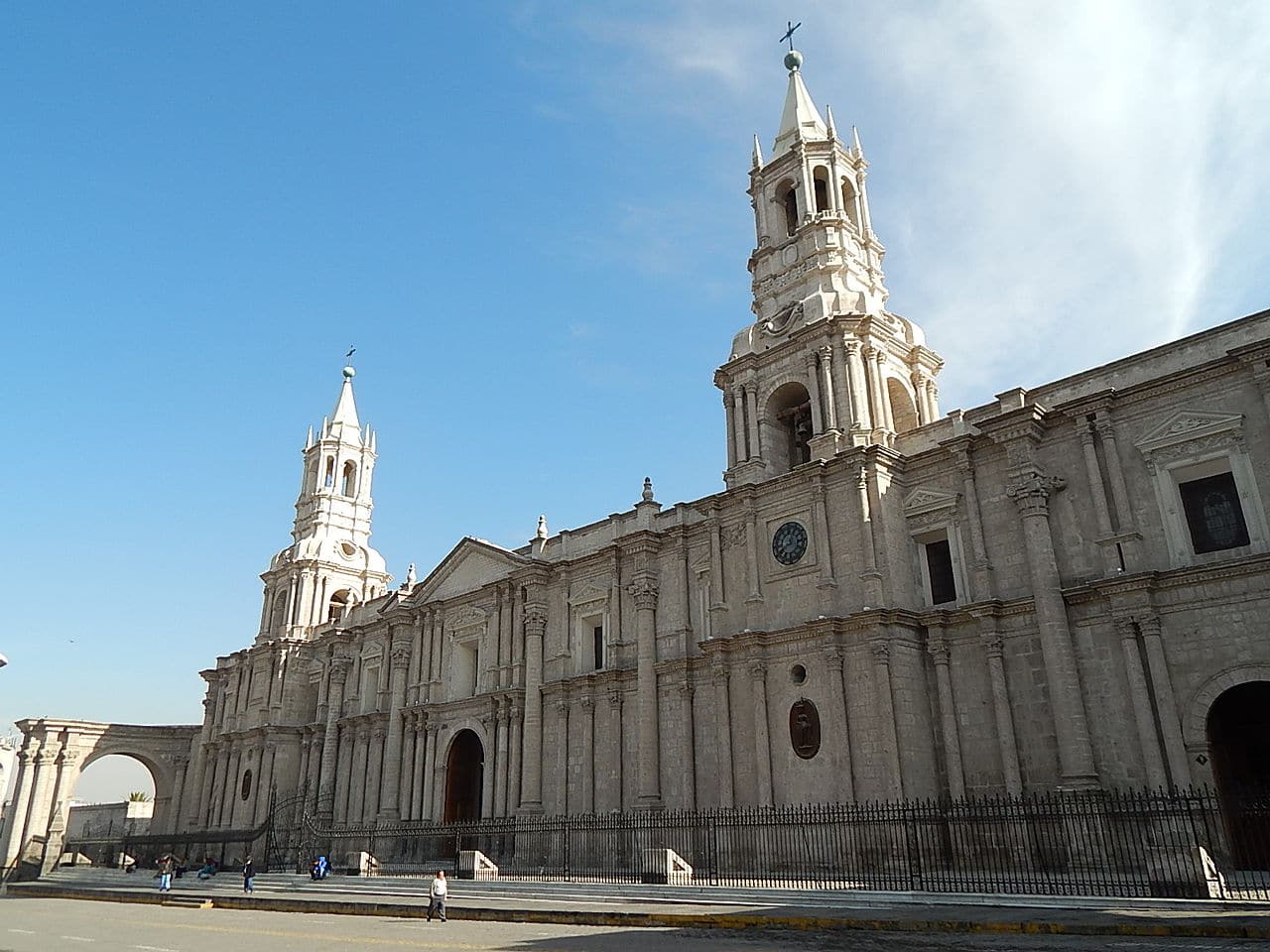
Arequipa Cathedral
But the historic center of Arequipa has much more to show you. The monumental buildings it contains are estimated at about five hundred. Among the civilians, you can see large colonial houses like the ones in iriberry, Tristan del Pozo or Goyeneche palace. For their part, among the religious, they also highlight the basilica and convent of San Francisco, Church of Santo Domingo and Recoleta convent.
Regarding the latter, one is a mandatory visit because it was classified as the most impressive religious monument in Peru. Its about monastery of Santa Catalina de Siena, which is rather a citadel of almost two thousand square meters and painted in bright colors. Do not miss its cloisters and its bell tower, all from the XNUMXth century, and its spectacular baroque altar carved in wood and gilding.
Finally, before leaving the town following our route through the cities of southern Peru, we allow ourselves to advise you to try the delicious Arequipa antojitos, one of the main sweet recipes of the White City.
Puno, on the shores of Lake Titicaca
Another of the great cities of southern Peru is San Carlos of Puno, which also has its Plaza de Armas. In this you can visit his cathedral, Baroque of the eighteenth century and there is also a pool, in this case dedicated to Francisco Bolognese, hero of the War of the Pacific against Chile.
You should also see in Puno the church of San Juan Bautista, which houses a beautiful image of the Virgen de la Candelaria; the Corregidor's house, house of the Glorious National College of San Carlos and Balcony of the Count of Lemos, all colonial style constructions; the Deusta bow and bust of Simón Bolívar.
But above all, go up to Huajsapata hill, where you will see the monument to Manco Capac, considered founder of the Inca empire, and also to Kuntur Wasi viewpoint, which means house of the condor and that offers you wonderful views of the city and the Titicaca lake.
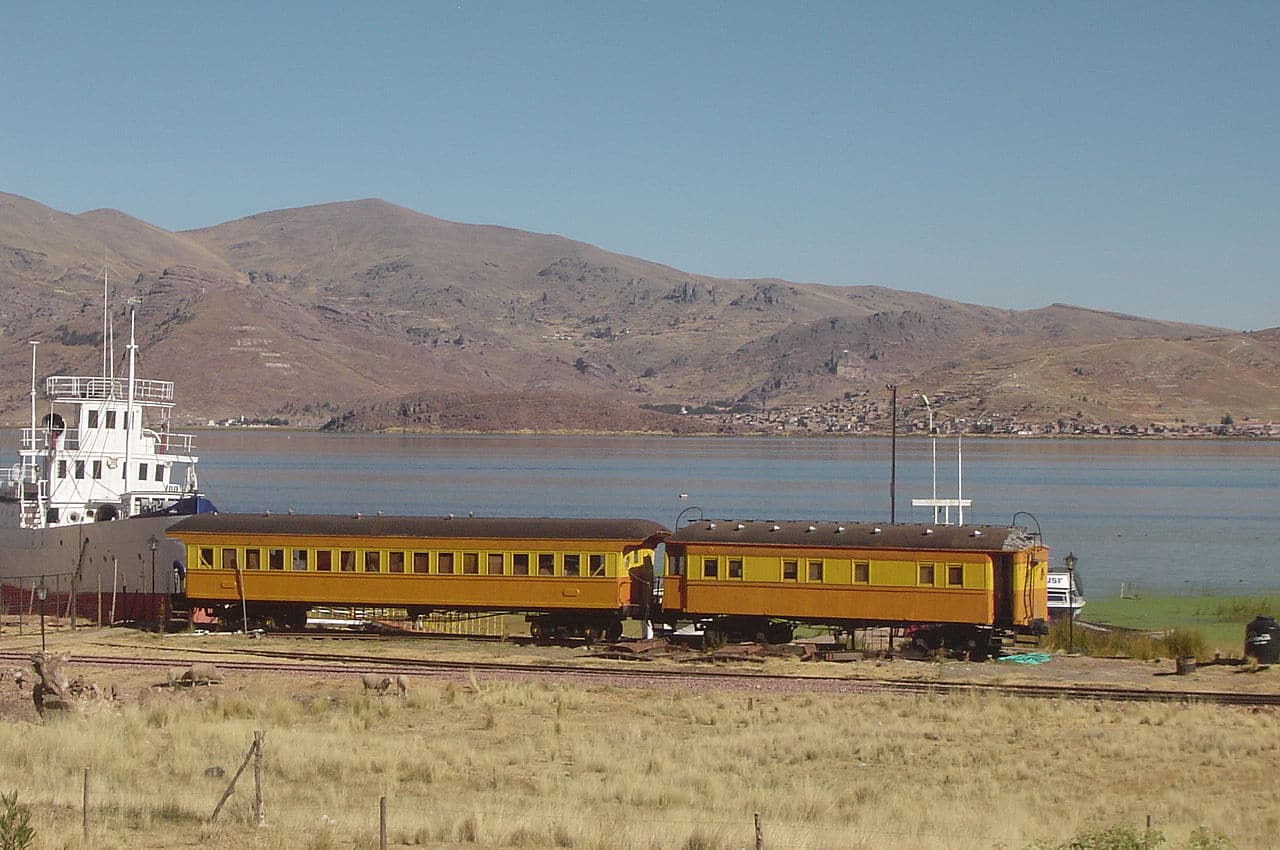
Lake Titicaca in Puno
Regarding this, the port of Puno was the first to be built on the lake and from there boat trips leave that will allow you to enjoy this natural wonder. With them, you can visit islands like taquile, amantani and the singular floating islets of the uros, made with cattails.
Finally, in the surroundings of the city, you have another wonderful natural environment. It's about the Umaya lagoon, where is it located Sillustania, an ancient cemetery of the Aymara culture of the kolla, developed between 1200 and 1450 of our era.
Moquegua and its typical houses
The most characteristic of this city in southern Peru are its houses with a mojinete roof. That is, made with reeds and clay, but with a gabled inclination of about fifty degrees so that they better absorb the heat of the sun.
However, this does not mean that Moquegua lacks monuments. On the contrary, it has a wonderful old town. In this you can see the Santo Domingo cathedral, where Santa Fortunata is present; the precious church of Bethlehem; the stone porticoes and the colonial mansions, among which the one of the Fernandez of Cordoba, The one of the Hair, The one of the Venues or Snake houses y of the Ten Windows.
You can also visit the Contisuyo Museum, which exhibits numerous pieces of ceramics, textiles and other objects from the Tiahuanaco, Chiribaya, Estuquiña and Inca cultures. But another of the attractions of Moquegua are its surroundings. Nearby is the town of Torata, with its old mills from colonial times and also the Chen Chen geoglyphs, less known than those of Nazca but equally spectacular with their camelid figures.
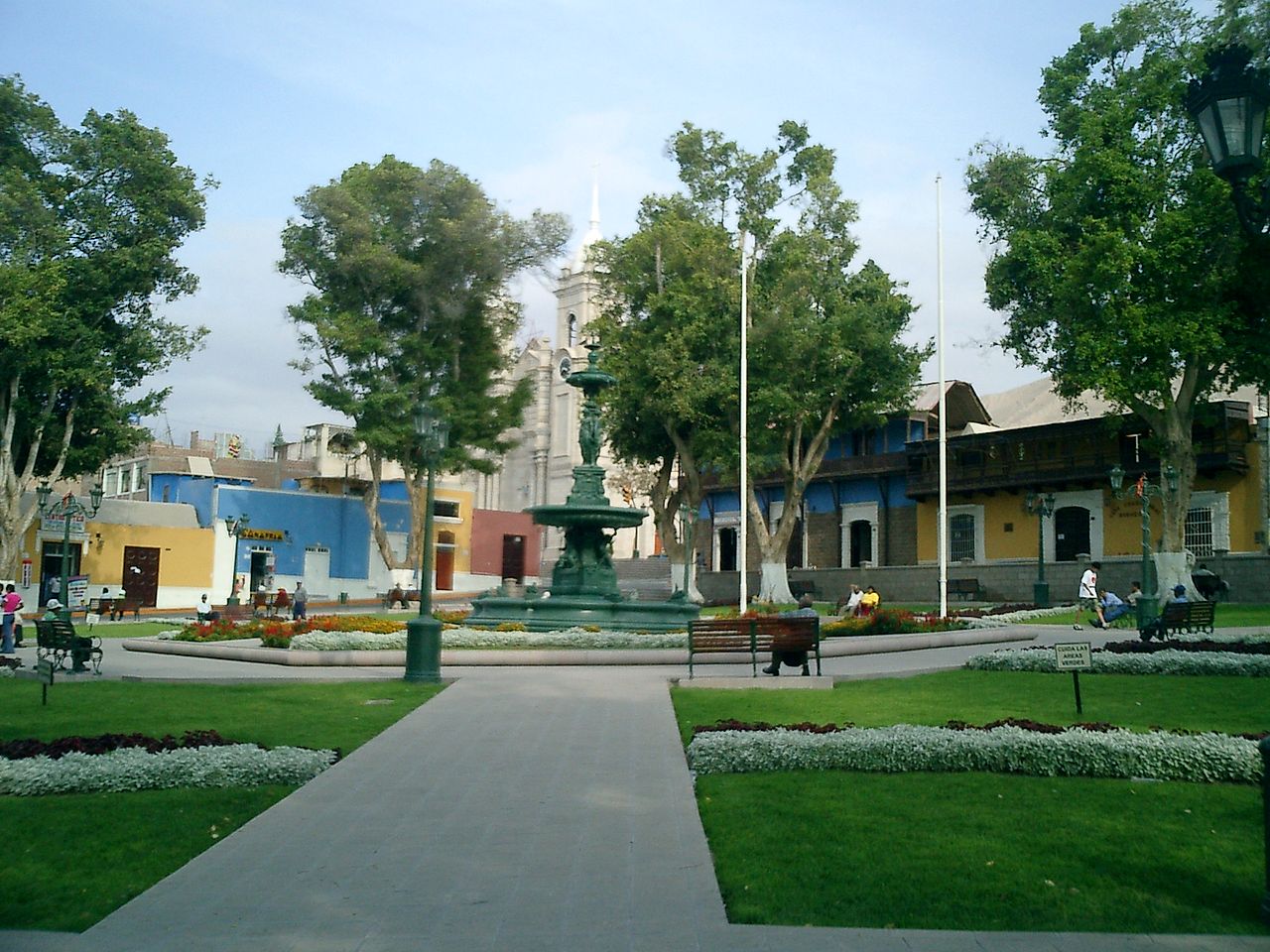
Moquegua Main Square
Ilo, the beaches of the cities of southern Peru
In the same department of Moquegua you will also find the city of Ilo, which offers you some of the most beautiful beaches in southern Peru. Among these, those of Jaboncillo, Boca del Río, Pozo de Lizas or Wawakiki, all bathed by the Pacific Ocean.
But Ilo offers you other places of interest. In its beautiful Plaza de Armas you have the sanctuary of San Jerónimo, built in 1871; from the José Gálvez roundabout you will get magnificent views of the coastline, and the Malecón Pier It will allow you to walk quietly. Finally, if you want to know more about the history of the area, in El Algarrobal you can visit the Chiribaya Museum, dedicated to this ancient culture.
Tacna, the southernmost city in southern Peru
Tacna is the last major city in southern Peru before reaching the Chilean border. And it also offers you a rich monumental heritage and interesting surroundings. Regarding the first, visit the Cathedral of Our Lady of the Rosary, an imposing neoclassical construction from the late nineteenth century.
Among the religious buildings, you should also see the Bab ul Islam mosque, one of the two that exist in all of Peru and that will surprise you with its constructive audacity. As for civilians, we advise you to see the Legal houses, by Francisco Antonio de Zela y basadre. The latter, so called because it belonged to the historian Jorge Basadre, houses a small museum dedicated to him.
But much of the most beautiful of Tacna is in the Bolognesi Avenue. Starting with the church of the holy spirit, you should also visit the Vigil passage, a very busy commercial area, and the Civic Walk of Tacna, where are the Monument to the Heroes and Ornamental Pool. Finally, you will also find on this avenue the Regional Historical Museum, where patriotic paintings and, above all, archaeological objects belonging to the Muchica, Chancay or Chimú cultures are exhibited.
If we talk to you about museums, you can also visit the National Railway with photographs, objects and locomotives of the Tacna-Arica line. It is complemented by Locomotive Park, where the one that led the Peruvian troops to the front during the War of the Pacific is exposed.
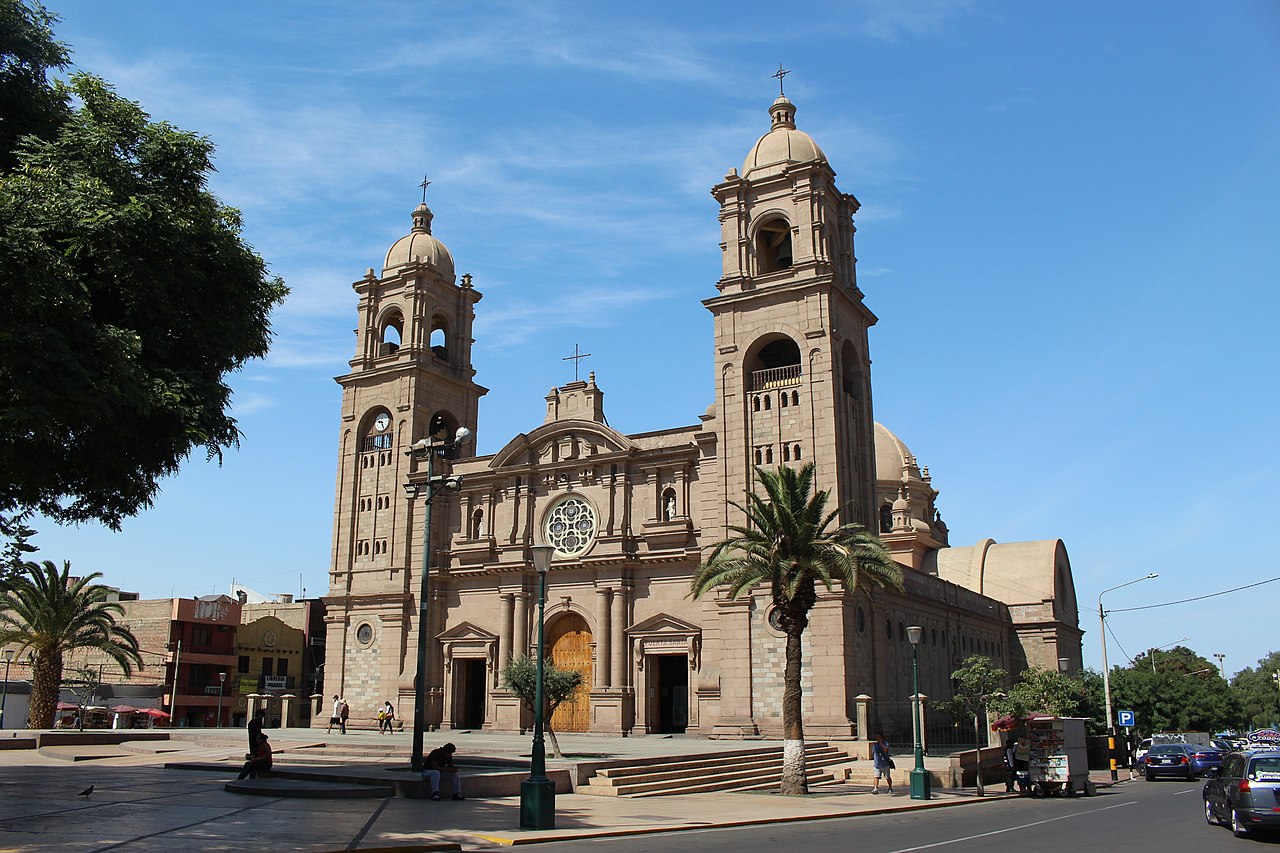
Tacna Cathedral
Finally, about fifteen kilometers from the city, you have the famous Miculla petroglyphs, some dated to the V century of our era, and in the small town of Calientes you can enjoy thermomedicinal waters.
Desaguadero, border with Bolivia
It occupies the eastern bank of the river of the same name, which acts as a natural border between Peru and Bolivia. Curiously, on the other shore there is a homonymous population belonging to the last mentioned country.
In any case, we cite you this small town of barely eight thousand inhabitants more for its geographical location than for its tourist value. It is true that it has a beautiful church, that of San Andrés, but little else it offers you to visit. However, the riparian zone of the Desaguadero river, which is born in the Titicaca lake, for its natural value.
In conclusion, these are the areas of southern Peru that deserve your visit. A little to the north, you have another area of enormous ethnographic and monumental value: the city of Cuzco and Machu Picchu of which we have already told you in other articles. But, returning to the cities of southern Peru, in them you will find a magnificent monumental heritage, remains of ancient cultures and even beautiful beaches. Go ahead and visit this area. You will not regret.